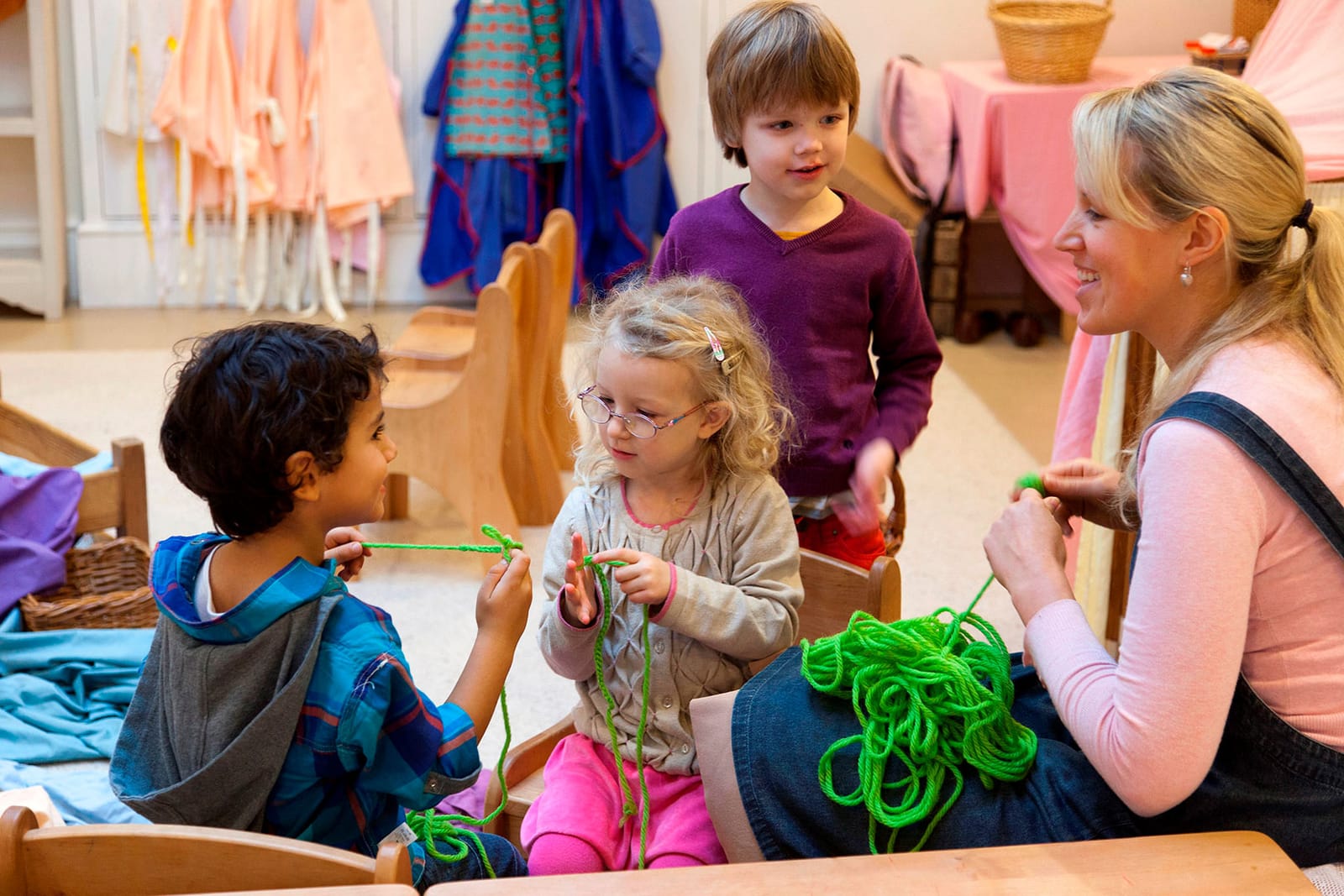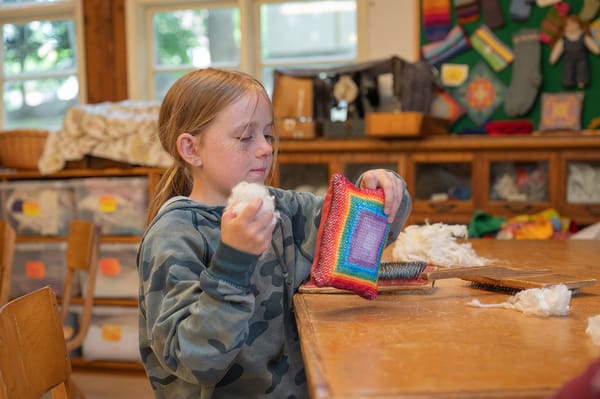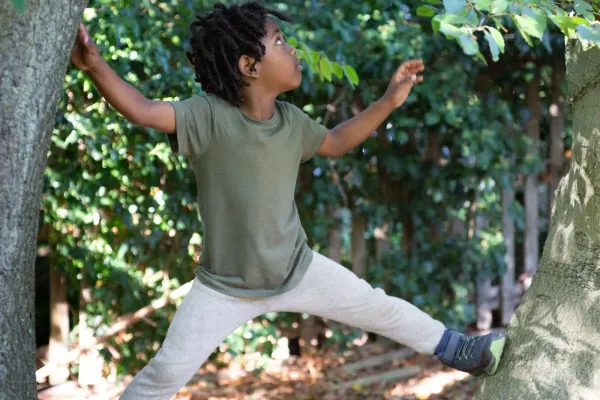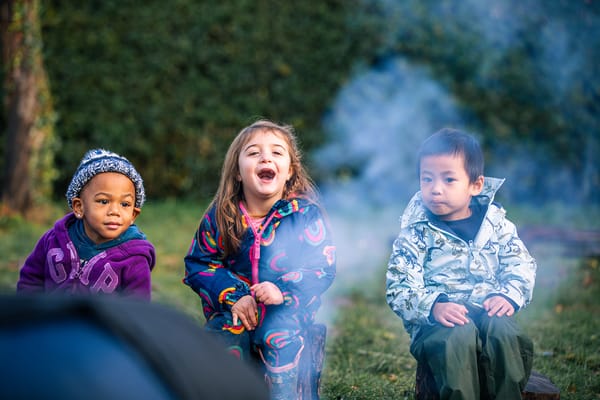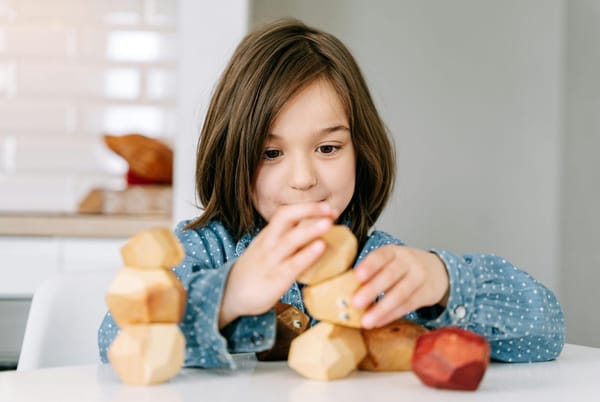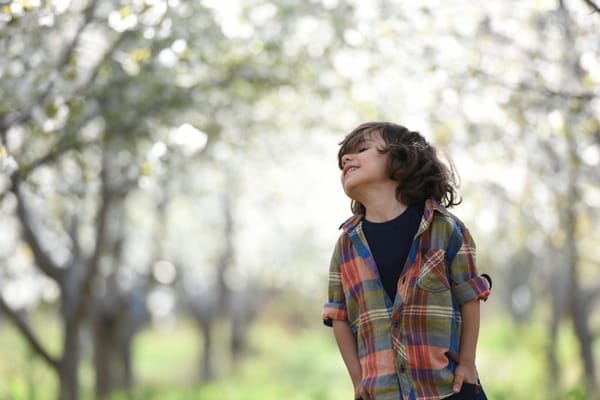Foundations for learning, behaviour, and health are built in the earliest years of life. Becoming an early childhood practitioner is not just about learning to teach; it’s about understanding how to nurture potential, foster creativity, and inspire a love for learning that will last a lifetime. Undertaking a Steiner Waldorf early childhood training goes even further. Students say that it involves personal and professional transformation at a profound level, that enriches their lives in many ways.
Rudolf Steiner (1861-1925) was a philosopher and educator who taught a path of inner development, known as ‘anthroposophy’, exploring the wisdom of the human being (Nicol, 2024). His lectures and ideas inspired projects in the fields of agriculture, medicine, architecture, art and new social structures to name but a few. All these initiatives relate to caring for the planet as well as bringing positive human values into our institutions, and nurturing human potential.
In 1919 Emil Molt, the owner of the Waldorf Astoria cigarette factory asked Steiner to support him to open a school for the children of his staff. Steiner had spent many years lecturing on and discussing the importance of age-appropriate learning and believed that a school curriculum should be practical and artistic as well as academic. In creating this new school, teachers worked on developing creative activities within all subject areas which would support children’s physical, social, cognitive and spiritual development, enabling each child to fulfil their potential. Within Waldorf schools teachers balance working with ‘head, heart and hands’ to provide a curriculum that is age-appropriate but also relevant to the social and cultural realities of their particular country and environment (Rawson, 2021). The aim is to provide an education empowering autonomy and freedom of thought which expands the possibilities for each person in finding their own rewarding and purposeful life (Suggate and Suggate, 2019). There are now Waldorf Schools and Kindergartens in 75 countries.
‘We do not educate the child for the age of childhood; we educate him for his whole earthly existence.’
Rudolf Steiner. The Roots of Education, 1924
One of the distinct aspects of Waldorf education is that early childhood is seen as a significant phase from birth to six or seven years (Suggate and Suggate, 2019). This aligns with the traditional starting age for formal education in Europe and other parts of the world and corresponds with other educational theories such as Montessori (Miller and Pound, 2011). In UK Waldorf schools, children stay in Kindergarten until the September following their sixth birthday, when they move into Class 1 and formal education begins.
In 2026, we will celebrate the centenary of the first Steiner Waldorf Kindergarten. Steiner Waldorf Early Childhood Education has evolved in the past 100 years but the principles that motivated Rudolf Steiner and his co-workers are just as relevant today. These principles are threaded through all of the Waldorf Early Childhood training pathways, providing the opportunity for students to learn through their own experience in a myriad of different ways, alongside and enlivening theoretical modules. Students study contemporary early childhood practice, current regulatory aspects as well as critically reflecting on wider educational theories. Kindergarten teacher training is long standing in the UK and currently there are two centres offering Level 4 and Level 5 courses – LoSWEC https://loswec.co.uk/ (London) or NESWEC https://neswec.org.uk/ (York and Stourbridge).
Traditionally children joined Kindergarten at 3 or 4 years of age, but in recent years different Steiner Waldorf initiatives around the world have been developed to care for children under the age of three and meet the needs of families, including nurseries, childminding and groups specifically for 2- and 3-year-olds within Kindergartens and schools. The full and relevant Level 3 EYE Holistic Baby and Childcare course was established at Emerson College in 2015 to provide training for practitioners wishing to work with this younger age group. (Holistic Baby and Child Care https://emerson.org.uk/course/level-3-diploma-in-holistic-baby-and-child-care-early-years-educator/)
Professional Love and Care
Professional love (Page, 2018) and a welcoming, warm atmosphere should be the basis of any early childhood setting, whether it is school, nursery or home based, and is an essential foundation for children’s healthy development. Children in Waldorf settings develop secure attachments with their caregivers, relying on a consistency of staffing and attitudes. Slowing down and giving children time and space to explore their own interests, to develop their capacities, enjoying friendship and connection is an important aspect of each day in a Waldorf setting. Rudolf Steiner emphasised the role of the child’s emerging sense of self (Rawson, 2024) and Waldorf Practitioners ensure that children have time to express their own views and perspectives. Emmi Pikler (1902-1984) developed an approach to the respectful care of young children (Pikler UK Association) which has influenced Steiner Waldorf practitioners working with children from birth to three. The Holistic Baby and Childcare course provides opportunities for students to practice the gestures and responses necessary to support a nurturing relationship between caregiver and children (Marlen, 2017). Students practice aspects of care with dolls and each other, recognising that the significance of these experiences goes well beyond simply meeting the daily physical needs of the child, encompassing their developing interoception and attachment to caregivers.
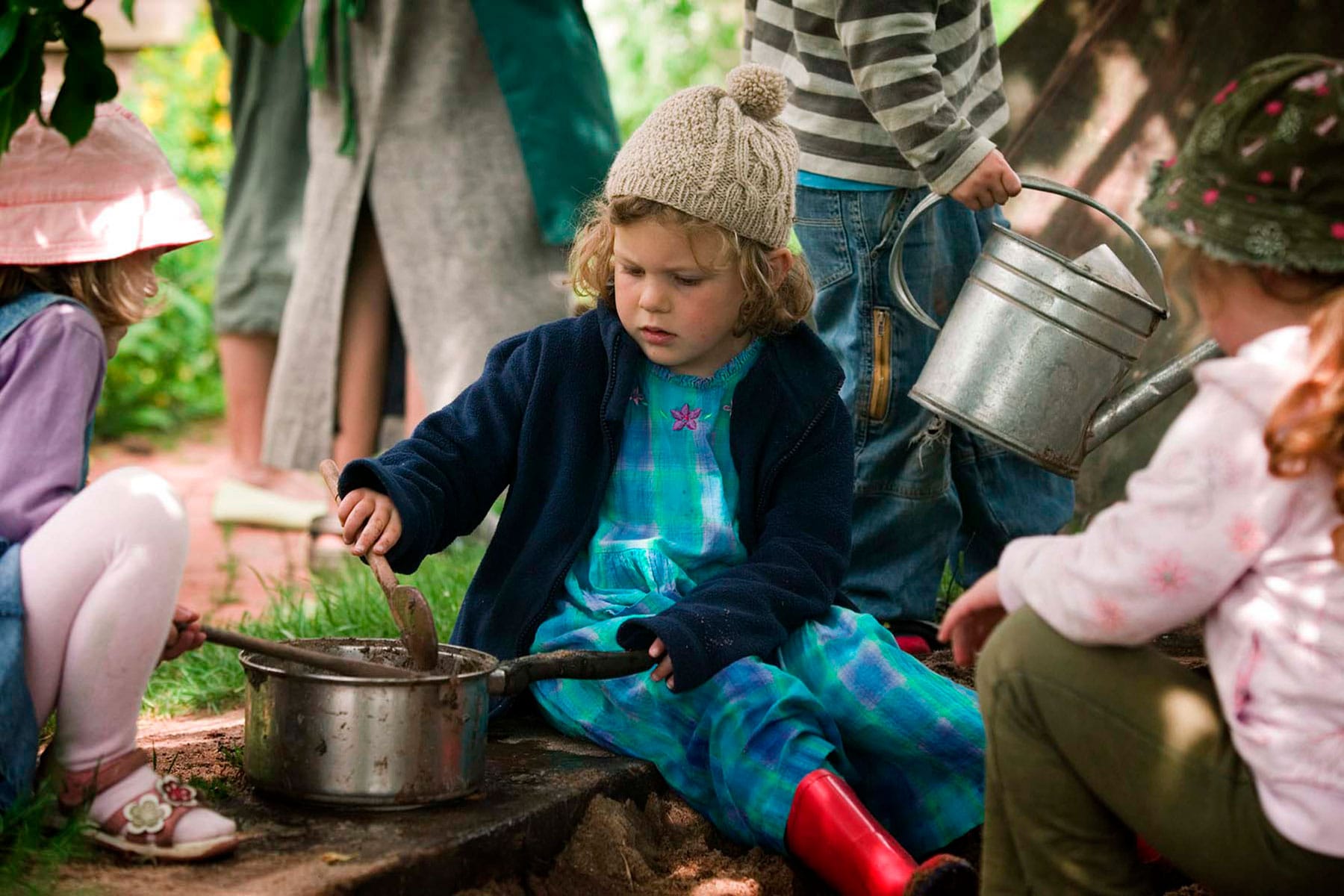
Rhythm and Repetition
Providing a balanced rhythm of adult led activities, self-initiated play, time indoors and outside creates an environment that supports resilience and wellbeing and is an essential principle of Steiner Waldorf practice (Nicol and Taplin, 2012). Healthy repetition reinforces children’s sense of security and allows them to consolidate skills and develop new capacities. An example of this is the Waldorf Kindergarten tradition of telling the same story every day for a week or so, using simple props and puppets. This enables the children to relax: they can practice their developing literacy skills, including listening and creating imaginative pictures from their own lived experience (Taplin, 2025) as well as developing a deeper understanding of narrative conventions. In addition to hearing tutors give examples of stories they like to tell, the students on the NESWEC course write their own stories and work together on their puppetry skills. The principle of working with the rhythm of the day, week and the year is reflected in the training courses in a number of ways, particularly through working on the necessity of developing healthy work habits and finding a balance in our own lives. Students will also discuss a variety of ways of working with rhythm and repetition for different ages of children, considering their needs and the type of setting they attend.
Educating the Senses
The significance of sensory experiences in the first seven years of a child’s life cannot be underestimated (Oldfield, 2001) as these provide a foundation for neurodevelopment and later academic learning. Steiner Waldorf Practitioners provide a sensory-rich environment, offering play with open ended natural materials, domestic and artistic activities as well as time outdoors to explore and help with gardening tasks. Students on placement can observe children’s responses to age appropriate, meaningful sensory activities, for example baking bread, which offers opportunities to experience touch whilst kneading the dough, as well as taste, smell and other senses. The Holistic Baby and Childcare course includes experiential activities for students exploring the concept of sensory experience and discussing their own responses as well as reflecting on the feelings and reactions of young children.
Imagination and Play
Waldorf early childhood settings provide indoor and outdoor environments that stimulate children’s free play and imagination. Open ended resources such as cloths, blocks and planks provide limitless inspiration for all kinds of different sorts of play and games. The children are not bound by the learning objectives or interference of adults (Fisher, 2026) and can begin to solve their own problems, and develop social skills, creativity and their understanding of the world. They learn to negotiate and collaborate, which are essential skills for whatever possibilities their future may hold (Taplin, 2025). Students’ imagination is fostered on the training courses through the development of skills such as storytelling. Play is a subject studied in depth on all three courses and also through personal experience. The Holistic Baby and Childcare students explore different kinds of play and reflect on how the environment of the setting and attitudes of the adults can impact children’s opportunities for free play.
Creative arts – an integrative approach
A fundamental principle of Waldorf education is the integrated nature of the curriculum and in early childhood settings this is evident throughout the day. Activities are not divided into neat ‘subject’ boundaries but can provide many opportunities for learning. Artistic and creative activities are part of everyday life in these settings and can assist many aspects of a child’s development (Howard, 2019). Children and adults will sing, recite poems, play games, move and dance each day using carefully planned sequences that reflect children’s needs and interests as well as providing increasing challenge. Through songs and rhymes they might explore mathematical and scientific concepts as well as developing vocabulary and other essential literacy skills. Songs can help the flow of the day for children, moving from one activity to another almost seamlessly. Endorphins and oxytocin are released by the brain when we sing, lowering stress and anxiety levels. Movement and dance supports proprioception, and social competencies are enhanced through these activities as children learn to take turns to listen to each other and develop a healthy sense of belonging.
On all three courses students spend time singing together, learning and sharing songs, rhymes and games that they might use with children in many different ways. Singing together has been shown to support wellbeing and provides a meaningful and joyful way of connecting with one another.
Throughout the week artistic and craft activities will be provided in Waldorf Kindergartens. The children will draw, paint and may use modelling materials. Various craft projects will be organised which may involve sewing, felting as well as paper crafts. All of these activities will relate to the seasons, for example making paper butterflies or flowers in the summer. Craft activities enhance fine motor skills, children’s aesthetic sensibilities, knowledge of the world and self-esteem. Students on all three courses will have opportunities to draw and paint, exploring and discussing the qualities of colour and form. NESWEC and LOSWEC students each create a doll for their settings as a project and Holistic Baby and Childcare students also explore felting as well as designing and creating a story apron, enhancing their storytelling skills and resources.
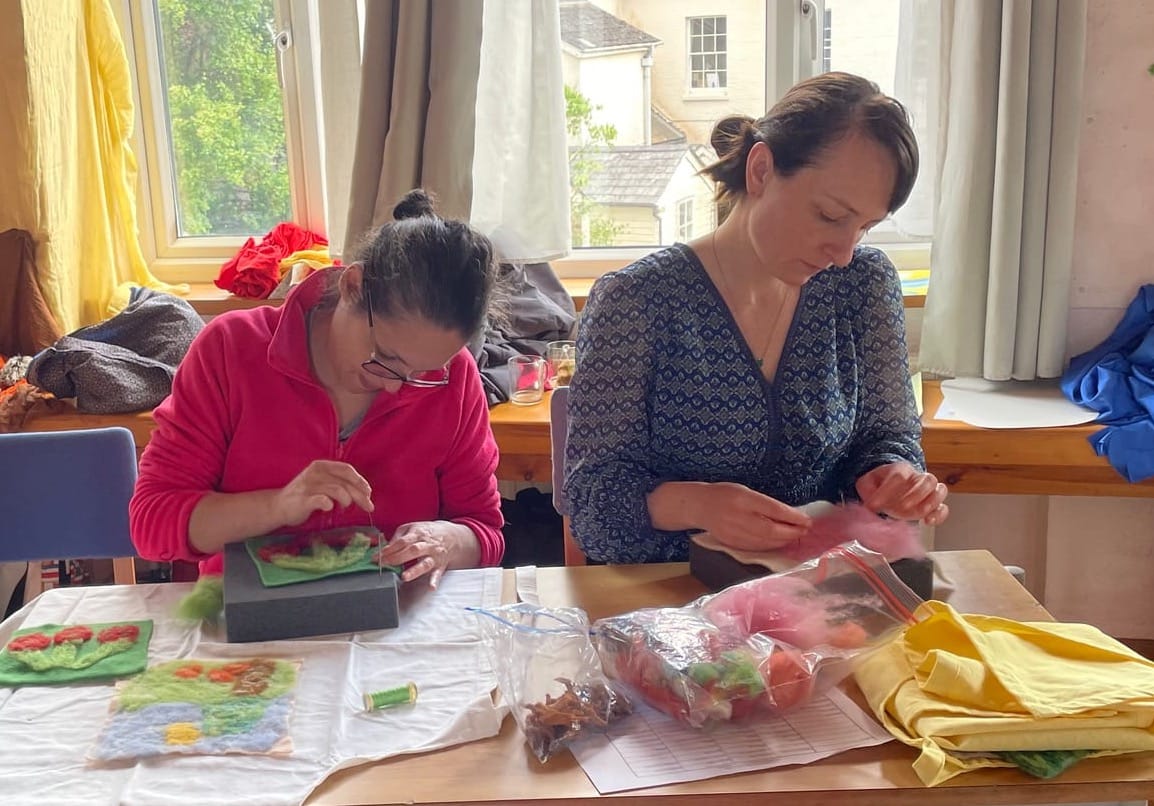
Connection to the natural world
In any Waldorf setting the children will spend part of every day outside. This allows them to connect to the natural world, developing an understanding of the world, the seasons, weather, flora and fauna through direct, personal experience, not simply through books or adult instruction. Children will work alongside adults with gardening tasks, taking joy in caring for the vegetable garden and then experiencing wonder as they are able to harvest, prepare, cook and eat what they have grown. On the training courses students also spend time outdoors, particularly during the longer residentials which are all held in venues with beautiful outside spaces. They might create a willow structure, outdoor craft or learn about foraging. All of the students work on creating seasonal nature tables which bring the natural world into the indoor environment and provide a focus of gratitude and wonder.
Perhaps you are passionate about holistic early childhood education and care that truly nurtures potential, giving children the time and space to play, to flourish and to develop resilience? If so, then please join one of our free online information sessions to find out more about Waldorf Early Childhood training opportunities:
2 July 2025 – 7.00 pm - Register Here
7 July 2025 – 4.30 pm - Register Here
9 September 2025 – 4.30 pm - Register Here
Interest-free loans are available for the course fees for these courses. They are all part-time courses and can be completed alongside a full- or part-time job.
If you already have an early years qualification, the above courses all offer a ‘quality mark’ pathway, where the course content is the same, but the assessment burden is significantly reduced.
For further information, contact Sam at sam.greshoff@waldorfeducation.uk or visit waldorfeducation.uk
Course links:
Crossfields Institute Level 3 Diploma in Integrative Early Childhood Pedagogy (Early Years Educator) Holistic Baby and Child Care:
https://emerson.org.uk/course/level-3-diploma-in-holistic-baby-and-child-care-early-years-educator/
Crossfields Institute Level 4 Diploma in Integrative Early Childhood Pedagogy (Early Years Educator) Steiner Waldorf: https://loswec.co.uk/ (London) or https://neswec.org.uk/ (York and Stourbridge)
References
Fisher, J (2016) Interacting or Interfering? Improving interactions in the early years. London: Open University Press.
Howard, S (2019) ‘What Young Children Really Need: The Essentials of Waldorf Early Childhood Education’. Kindling, Journal for Steiner Waldorf Early Childhood Care & Education, Issue 46. Available at https://kindlingjournal.org/
Marlen, D. (2017)’ EYFS Best Practice: All about…Pikler’. Nursery World. Available at: https://www.nurseryworld.co.uk/content/features/eyfs-best-practice-all-about-pikler/ [Accessed: 14/06/25].
Miller, L. & Pound, L. (2011) Theories and Approaches in Early Years. London: Sage Publications.
Nicol, J. (2024) ‘Tracing Steiner’. Early Years Educator December 2024 Supplement.
Nicol, J. and Taplin, J.T. (2012) Understanding the Steiner Waldorf Approach. Abingdon: Routledge.
Oldfield, L (2001) Free to Learn. Stroud: Hawthorn Press
Page, J. (2018) ‘Characterising the principles of Professional Love in early childhood care and education’, The International Journal of Early Years Education, 26(2), pp. 125-141. Available at: https://doi.org/10.1080/09669760.2018.1459508 [Accessed: 13/06/25].
Pikler UK Association https://pikler.co.uk/
Rawson, M. (2021) Steiner Waldorf Pedagogy in Schools: A Critical Introduction. Abingdon: Routledge.
Suggate, S. and Suggate, T. (2019) Reclaim Early Childhood: The Philosophy, Psychology and Practice of Steiner-Waldorf Early Years Education. Stroud: Hawthorn Press.
Taplin, J.T. (2025) ‘Preparing for the future’. Early Years Educator January 2025 Supplement.


